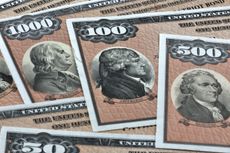The Ups and Downs of Owning a Racehorse
Invest in thoroughbreds for the fun you'll have, not for the profits you'll probably never see.
All eyes at the Gulfstream Park racetrack in Hallandale Beach, Fla., are on the 12 towering thoroughbreds filing into the starting gate. As the jockeys, resplendent in colorful silks and white pants, guide their companions into position, the sky opens up and douses the already muddy track.
Ignoring the downpour, fans who had been watching the first eight races indoors on 50-inch flat-screen TVs rush onto the patio. Spectators on the upper clubhouse level clog the aisles of the covered stands. All are gunning for an unobstructed view of the day's biggest event: the $150,000 Holy Bull Stakes, a prep race for 3-year-olds in the running for the Kentucky Derby, held this year on May 6 in Louisville.
| Row 0 - Cell 0 | Slideshow: Off to the Races |
| Row 1 - Cell 0 | Resources for Prospective Investors |
No one in the stands is more anxious than the horses' frazzled owners, many of whom look as if they could use a lap around the track themselves. Each has spent big bucks to be a player.

Sign up for Kiplinger’s Free E-Newsletters
Profit and prosper with the best of expert advice on investing, taxes, retirement, personal finance and more - straight to your e-mail.
Profit and prosper with the best of expert advice - straight to your e-mail.
But while horse racing may be known as "the sport of kings," the game isn't just for millionaire playboys and Kentucky bluebloods. Clifton Hickok, a shipping-industry account executive from Orlando, owns No. 8: Flashy Bull, an offspring of the race's namesake. Kenneth Fasola, a Toledo, Ohio, insurance executive, also owns a share of this striking gray colt. So does Chicago investment consultant Lars Greiner. In all, 14 investors -- mostly middle-aged, professional men -- own a piece of Flashy Bull.
Welcome to the world of thoroughbred investing. Yes, regular folks have a chance to own racehorses, no equine experience necessary. But don't do this for the money -- your odds are better as a bettor. "We tell people right off the bat that you should be prepared to never see the money you put up again," says Jack Sadler, vice-president of Dogwood Stable, in Aiken, S.C., a pioneer of thoroughbred partnerships.
How the deals work
Dozens of operations scour auctions for thoroughbreds with untapped value, then sell shares of those horses to investors. A few thousand dollars can buy a share of a horse that races regionally and is managed by a small partnership. Larger operators, such as West Point Thoroughbreds, which manages Flashy Bull, deal in horses that run in high-stakes races. Shares of these horses are more likely to fall in the $15,000 to $40,000 range. Many larger operations are set up as limited-liability companies, and the investors are treated as limited partners. That can result in tax benefits, but it can also create headaches when it comes time to file your returns (for more on horse investing, see Horse Sense for Horse Investors).
Back in the stands, Hickok can't sit still. Chattering excitedly with his college-age daughter, he estimates that it will take just 40 seconds to get down to the winner's circle. "I keep telling myself I need to calm down," Hickok says, as West Point representatives pass out cigars. "We've been here before -- we're veterans. We should be able to keep our cool."
But all attempts at maintaining composure fly out the window when the starting bell sounds. The doors whip open, and the horses burst from the gate. Thundering hooves fling mud skyward as the horses barrel down the track at speeds nearing 40 miles per hour. Hickok and the sea of suits surrounding him lurch forward as one, shouting and chanting.
For racehorse investors, few names are more inspiring than Afleet Alex and Funny Cide. Five friends from the Philadelphia area bought Afleet Alex in 2004 for $75,000. The horse won both the Preakness and Belmont stakes last year and went on to earn $2.7 million during his brief racing career. In 2003, ten small-time investors hit the jackpot with Funny Cide, who also cost $75,000. The gelding won both the Derby and the Preakness and has pulled in more than $3 million.
Slim odds of success
But Afleet Alex and Funny Cide are the exceptions. Turning a profit -- or even breaking even -- in the racehorse business is a long shot. According to a survey of thoroughbred races by Thoroughbred Times magazine, about one-fourth of racehorses earned less than $1,000 in 2005. Only 17% drew $25,000, the average annual cost of boarding and training a racehorse. Only 2% of horses won $100,000 or more in purse money. "The odds are not good," says Terry Finley, founder of West Point, which is based in Mount Laurel, N.J., and also has offices in Louisville, Ky. "This is similar to investing in an early-stage tech company. Often it doesn't work out, but looking for the next Google keeps you going."
Investing in an animal is an enormous gamble. In spite of their immensity and gleaming muscles, horses are fragile creatures and susceptible to injuries that often cut short their racing careers. And even if a horse stays healthy, the chances of it becoming a big winner are still slim: Of the 35,000 foals born each year in the U.S., only about 20 make it to the Derby three years later. For most investors, the payoff comes not from earnings but from the thrill of playing the game -- and, especially, from winning. "Standing in the winner's circle is the only time in my life, other than the birth of my children, that I've felt such a rush," says Hickok, who has invested in two dozen racehorses over the past 13 years. He has stood in the winner's circle 50 times and won more than $100,000 in purse distributions. Yet Hickok is still $20,000 short of breaking even. "I'm certainly down, but I'd spend it all again, for the experience," he says.
[page break]
If a profitable investment in a horse is a long shot, what do you get? Partners gain access to the training stables, premium seating at races in which their horse is running and invitations to social events. And for those fortunate enough to own a horse that crosses the finish line first, the ultimate bonus is a picture in the winner's circle. How much are such thrills worth? To some people, quite a lot.
Movers and shakers
Before most people have had breakfast, horses at the Palm Meadows training facility in Boynton Beach, Fla., have already had a rigorous workout. During the winter, the stable can host 1,400 horses, each with its own custom diet and training regimen.
Flashy Bull winters in the stables of Kiaran McLaughlin, who has trained numerous Derby hopefuls and who once spent almost a decade training horses for sheiks in Dubai. West Point founder Finley checks in on Flashy's workout, then spends the morning mingling with an assortment of horse owners, trainers, jockeys and riders. His cell phone rings constantly. Finley's job -- organizing all the moving parts that make up a partnership -- depends heavily on networking.
West Point is one of a handful of high-profile organizers of thoroughbred partnerships. Others include Dogwood Stable, in Aiken, S.C.; Centennial Farms, in Peabody, Mass.; and Team Valor, in Versailles, Ky. West Point manages about 60 horses, each through a partnership consisting of eight to 15 investors. Dogwood's model calls for four investors per horse, each paying from $30,000 to $75,000 for a 23.75% stake (Dogwood retains a 5% interest).
On top of the initial buy-in fees, investors pay for ongoing costs, which include feeding and boarding a horse, training, veterinarian expenses, travel, and blacksmithing services. In a typical West Point deal, investors might pay a total of $45,000 a year for maintenance, which includes $6,000 in management fees.
Large, reputable operators have access to the best trainers and bloodstock agents, who evaluate a horse's lineage. Not surprisingly, the biggest firms also have the highest markups. For example, West Point bought Flashy for $210,000 at an auction in 2005, then threw in $45,000 for the first year for training and other costs, for a total of $255,000. The company then syndicated the horse for $380,000. "You're essentially paying for their reputation and ability to take care of you as an investor," says a Kentucky bloodstock agent.
At Gulfstream Park, there's bedlam in the stands as the contestants in the Holy Bull Stakes charge down the nine-furlong (11Ú8-mile) oval track. Mud-soaked jockeys guide their steeds through holes in the pack for more running room. Flashy, running wide in an outside position, catches the front-runners by the half-mile mark. But Flashy starts to fade as he nears the final furlong. Three others speed ahead, including Barbaro, who wins the race by just under a length.
Hickok and the other investors, who were ecstatic just moments earlier, quickly come back to earth. But their gloom dissipates soon. Flashy's fourth-place finish carries a $9,000 purse, adding to the $100,000 he has already won over the past year. As the spectators file out of the stands, the investors hang back, plotting Flashy's next big race. Hickok and his partners are hardly dejected. "This was really a steppingstone and another race under his belt," he says. "The excitement is still there."
Horse sense for horse investors
Approach racing partnerships as you would any other investment. Request a copy of the partnership's written plan or prospectus, which will include terms for the distribution of winnings and information about expenses, such as the managing partner's compensation. Talk with other investors and meet with the partnership's managing director to get a feel for the company's business plan, record and fees. For example, some quarterly fees include mortality insurance, which runs about 5% of the horse's value annually, while others require you to purchase it separately. Check out the Thoroughbred Owners and Breeders Association's Web site, www.toba.org, for upcoming owner seminars and a list of state owner and breeder associations.
The tax side of racehorse investing can be tricky. Many partnerships are set up as limited-liability companies, which involve a managing partner and a group of investors. These companies report profits and losses of each racehorse venture to the Internal Revenue Service. Investors then report gains and losses individually on a Schedule K-1 form. Investors who can demonstrate that they are actively participating in the business -- which generally means spending at least 500 hours per year on horse-related business -- can deduct losses in the same year they're generated. Passive partners usually have to wait until the partnership ends before claiming losses.
A partnership lasts "as long the horse is viable and has a legitimate shot to earn its keep," says Terry Finley, founder of West Point Thoroughbreds. Stallions with excellent race records and a handsome lineage can sometimes earn more in stud fees than on the track. Afleet Alex, winner of the 2005 Preakness and Belmont stakes, brings in $40,000 in stud fees for each live foal. Mares with good bloodlines can also yield breeding value once their racing careers are over.
| UPDATE |
| Flashy Bull Prepares for the Kentucky DerbyOn March 4, Flashy Bull placed second in the Fountain of Youth Stakes and earned $60,000. His subsequent performance at the Florida Derby on April 1 was disappointing -- he came in seventh place. But he's now preparing for the big race -- the Run for the Roses -- on May 6.Trainer Kiaran McLaughlin attributes Flashy's lackluster performance in the Florida Derby to an electrolyte imbalance known as "thumps," which is a spasm of the diaphragm caused by heat and dehydration. This is not a long-term condition, says the team at West Point Thoroughbreds, and McLaughlin is adding balancing fluids to Flashy's diet and readying the horse for the Kentucky Derby. "If all goes well, we'll be in the gates for the first Saturday in May," says West Point president Terry Finley. |
-
 Starbucks BOGO and New Sweet and Spicy Drinks
Starbucks BOGO and New Sweet and Spicy DrinksFor a limited time, Starbucks is announcing four new "swicy" drinks that are both spicy and sweet.
By Kathryn Pomroy Published
-
 Stock Market Today: Dow Slips After Travelers' Earnings Miss
Stock Market Today: Dow Slips After Travelers' Earnings MissThe property and casualty insurer posted a bottom-line miss as catastrophe losses spiked.
By Karee Venema Published
-
 Best Banks for High-Net-Worth Clients
Best Banks for High-Net-Worth Clientswealth management Kiplinger's 2023 list of the best banks for higher-net-worth clients.
By Lisa Gerstner Published
-
 Stock Market Holidays in 2024: NYSE, NASDAQ and Wall Street Holidays
Stock Market Holidays in 2024: NYSE, NASDAQ and Wall Street HolidaysMarkets When are the stock market holidays? Take a look at which days the NYSE, Nasdaq and bond markets are off in 2024.
By Kyle Woodley Last updated
-
 Stock Market Trading Hours: What Time Is the Stock Market Open Today?
Stock Market Trading Hours: What Time Is the Stock Market Open Today?Markets When does the market open? It's true the stock market does have regular hours, but trading doesn't necessarily stop when the major exchanges close.
By Michael DeSenne Last updated
-
 Bogleheads Stay the Course
Bogleheads Stay the CourseBears and market volatility don’t scare these die-hard Vanguard investors.
By Kim Clark Published
-
 I-Bond Rate Is 5.27% for Next Six Months
I-Bond Rate Is 5.27% for Next Six MonthsInvesting for Income I-Bonds issued November 1, 2023 through April 30, 2024 will have a rate of 5.27%.
By David Muhlbaum Last updated
-
 What Are I-Bonds?
What Are I-Bonds?savings bonds Inflation has made Series I savings bonds enormously popular with risk-averse investors. So how do they work?
By Lisa Gerstner Last updated
-
 This New Sustainable ETF’s Pitch? Give Back Profits.
This New Sustainable ETF’s Pitch? Give Back Profits.investing Newday’s ETF partners with UNICEF and other groups.
By Ellen Kennedy Published
-
 As the Market Falls, New Retirees Need a Plan
As the Market Falls, New Retirees Need a Planretirement If you’re in the early stages of your retirement, you’re likely in a rough spot watching your portfolio shrink. We have some strategies to make the best of things.
By David Rodeck Published